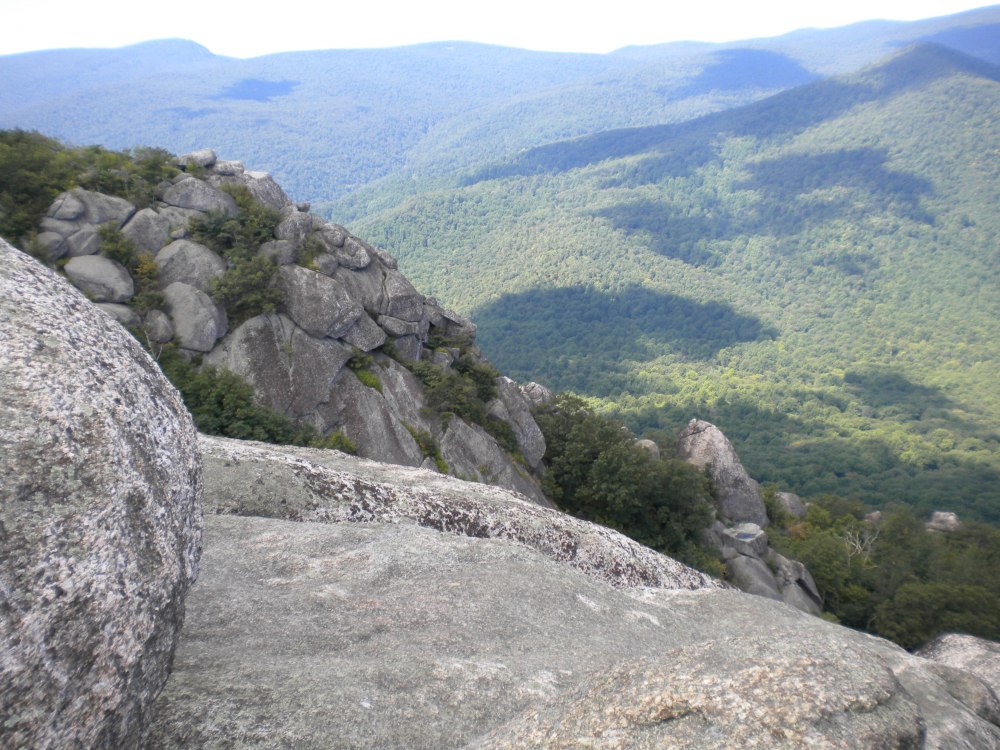My wife and I hosted our two sons and their wife and girlfriend over the weekend for a hike of Old Rag Mountain. This was a fairly ambitious undertaking for mom and dad who suffer from a variety of minor infirmities (mostly getting older), but we survived the ordeal without too much trauma. Of course, I took my small digital camera along, but if you were expecting photos of the wife and kids (the one and only photo, above) we’re not thinking along the same lines. Like it or not, my eye tends towards the native flora before I get around to the scenic vistas (and certainly before family photos), and in early September there were more than enough horticultural treasures to divert attention from my balky knees.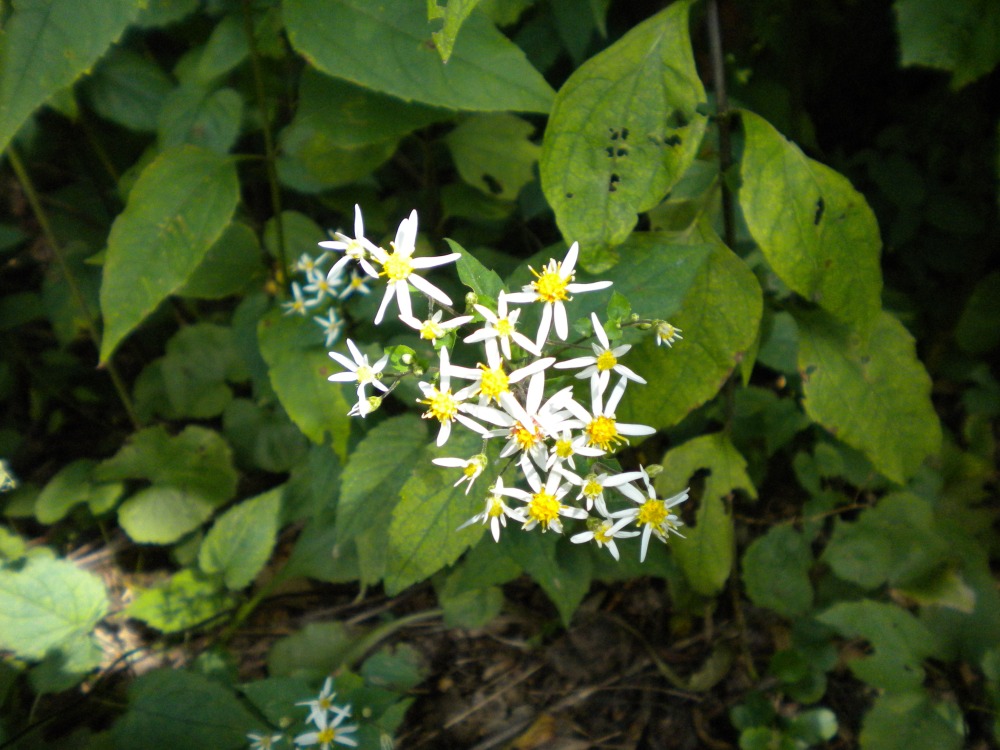
At the lower elevations there was not much to be excited about. Along the early parts of the trail were ragweed and Black Eyed Susans (Rudbeckia) in sunny spots, and a few left over blooms of Joe Pye weeds (Eutrochium purpureum). But, there was not much else of interest, though the forest understory was lush and green from the relatively cool and wet summer. Halfway to the top of the 3,291 foot mountain the landscape changed. Here, Mountain laurels (Kalmia latifolia) lined the stony paths with Wood asters (Symphyotrichum cordifolium, above) poking from beneath the densely branched evergreens, and masses of sunflowers (Helianthus, below) dotted the few sunny spaces. 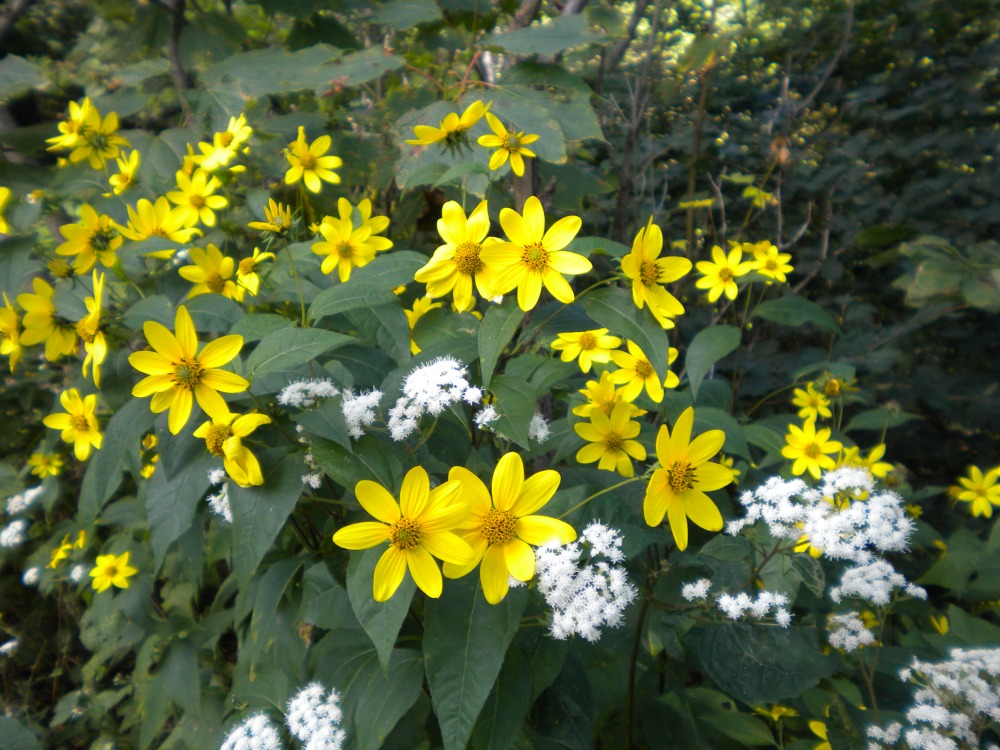
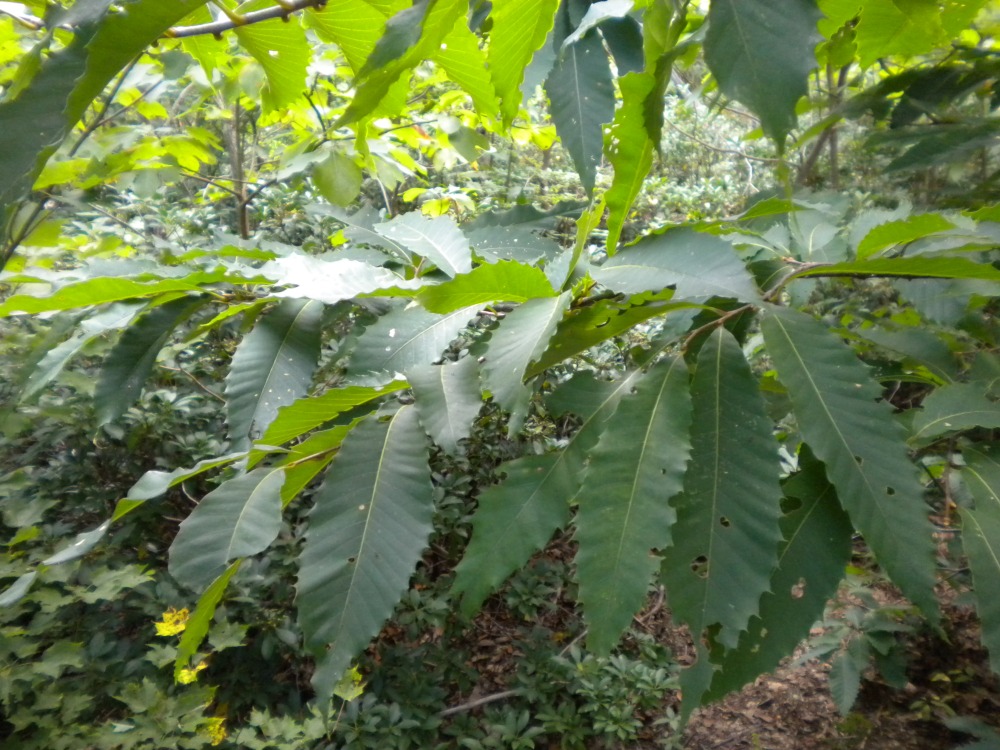
Where sun filtered through the tree canopy, clumps of American chestnut (Castanea dentata, above) and mitten-leafed Sassafras (Sassafras albidum, below) were seen. Sassafras is typically a thicket forming, shrubby tree, and these were most prevalent in the understory. The chestnuts are shrubby remnants of the once predominant trees that formed the canopy of this forest before blight took its toll, but now these are found only as seedlings, or as suckers of trees that have suffered from disease.
Beneath the half shaded canopy of towering Tulip poplars (Liriodendron tulipifera) on the trail down from the peak were Mountain magnolias (Magnolia fraseri, below). These are quite similar to the the Bigleaf magnolia (Magnolia macrophylla) in my garden that is native to areas a bit further to the south and west. The foliage of the Fraser magnolia is only slightly smaller than Bigleaf’s, but the same dull green so that it is not in demand as an ornamental for home gardens.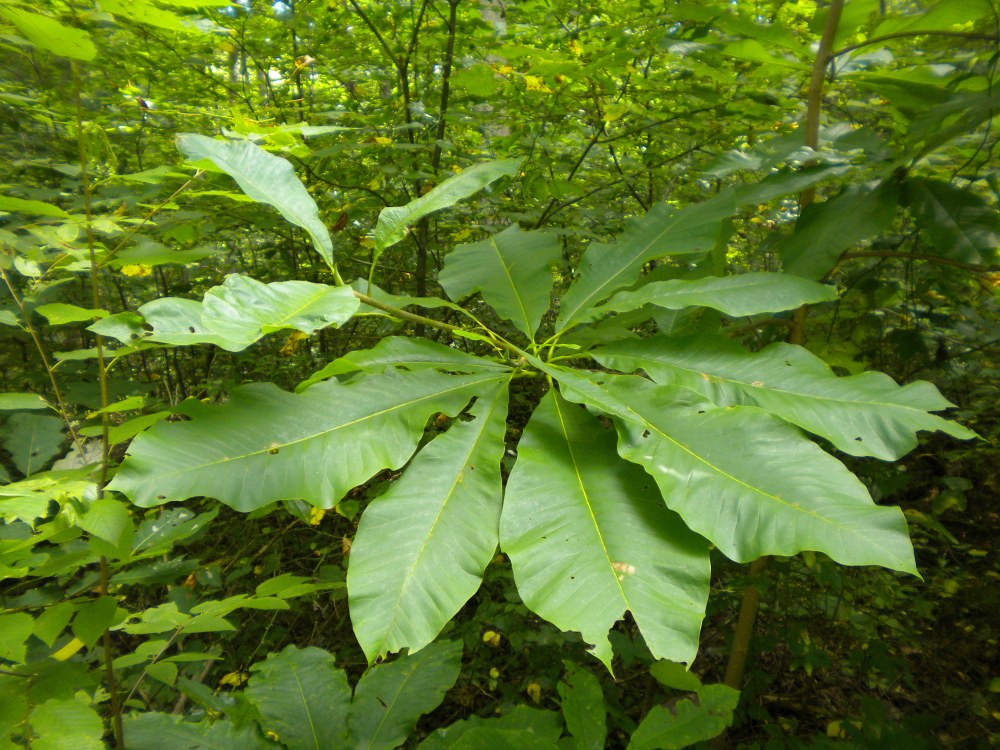
In this semi-shaded habitat the native Witch Hazel (Hamamelis virginiana, below) and Hazelnut (Corylus americana) flourish, and these are clustered along the trail nearly as densely as Sassafras. I reason that I have only so many strenuous adventures left in my growing-older-every-day body, but how marvelous it would be to hike again in spring to see the mountain laurels and azaleas, the huge magnolia blooms, and then the tiny witch hazel flowers that are mostly obscured by foliage just before the trees defoliate in late autumn.
Old Rag is popular for its rock scramble, a natural adventure park approaching the mountain’s peak that requires a variety of feats of strength and balance. This necessarily involves a few skinned knees, particularly for those of us who have grown more cautious with age, who refuse (or are unable) to leap over chasms where a misstep would result in more serious injury. I don’t suppose that I did too badly, but the carelessness of our youngest son reminded me that despite what I may occasionally fool myself into thinking, an additional thirty years does makes a difference.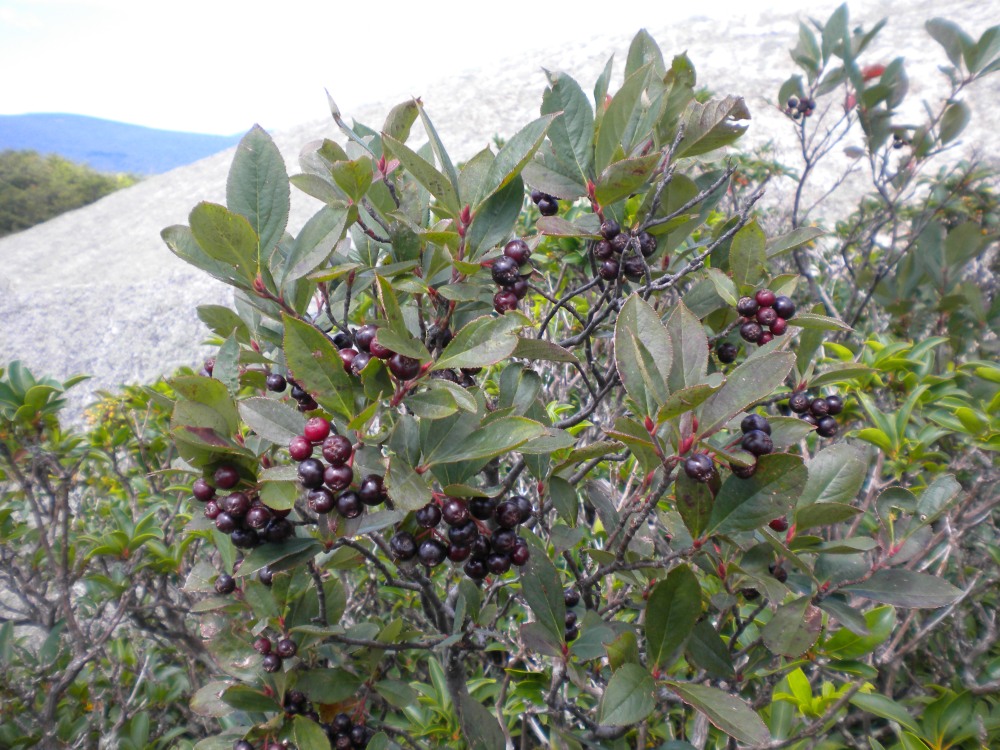
Only a small amount of blood was shed, with only minor strains, but no sprains (or worse) as we reached the top. Here, between building sized boulders in full sun, were colonies of Black chokeberries (Aronia melanocarpa, above) with clusters of small, black berries. In my garden chokeberries must be protected by a repellent to dissuade deer from nibbling foliage, flowers, and berries, but the unsteady footing of the granite boulders seems a more effective deterrent. In my garden chokeberry flourishes in damp soil, but here there is thin, dry soil and constant exposure to sun and mountain breezes. The foliage grows thick and leathery, but the berries are abundant.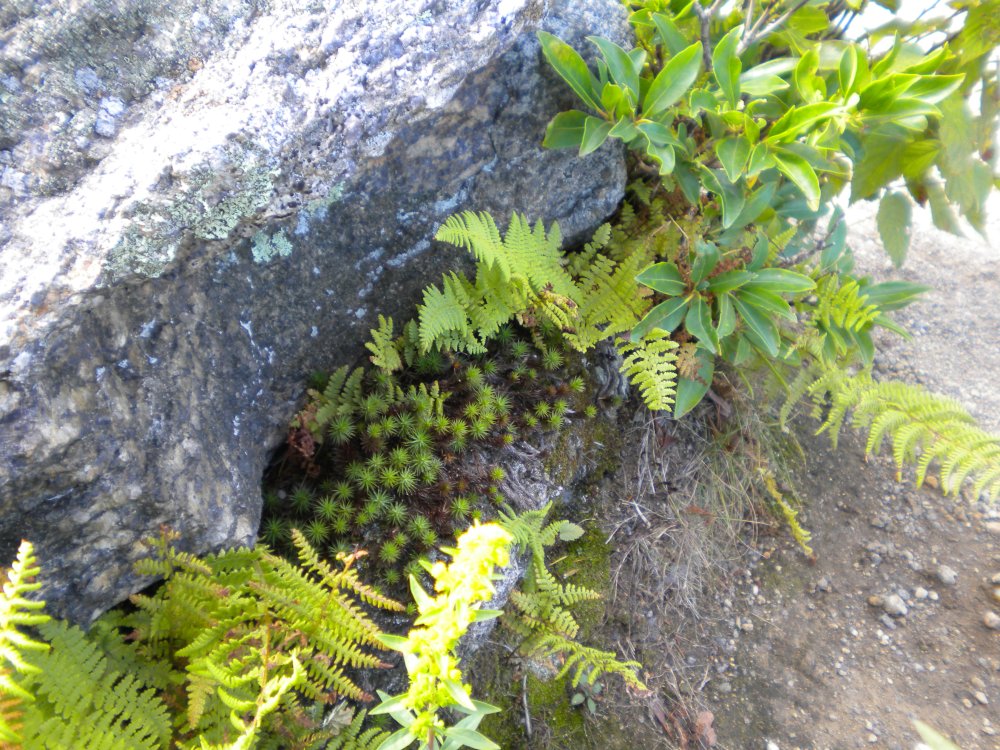
 The view from the top momentarily distracts me from searching the crevices (above) for new treasures, but then it’s on to new discoveries, and finally it’s time to leave this mountain paradise. Trail markers and carefully placed stones have eased this journey, so it cannot begin to compare with plant explorers who venture into the wilderness, but my tired body is satisfied by the wonder of today’s finds. The bruises and scrapes will quickly heal, but the memories of foliage and flowers (and friends and family) will not be forgotten.
The view from the top momentarily distracts me from searching the crevices (above) for new treasures, but then it’s on to new discoveries, and finally it’s time to leave this mountain paradise. Trail markers and carefully placed stones have eased this journey, so it cannot begin to compare with plant explorers who venture into the wilderness, but my tired body is satisfied by the wonder of today’s finds. The bruises and scrapes will quickly heal, but the memories of foliage and flowers (and friends and family) will not be forgotten.